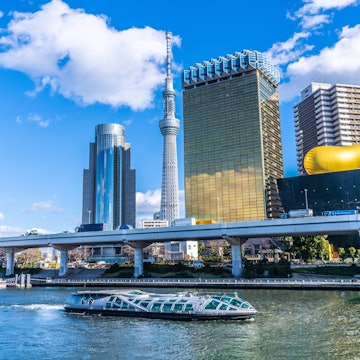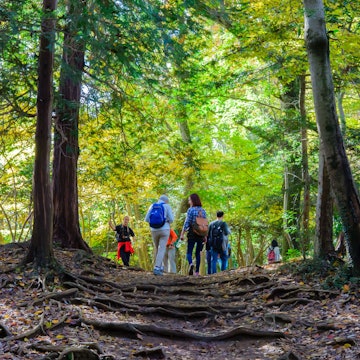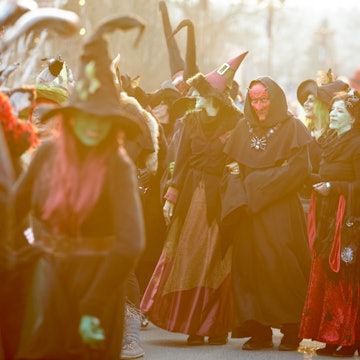
Tokyo's 10 best parks and green spaces: stroll through beautiful garden scenery

Apr 19, 2022 • 6 min read

From peaceful landscapes to blooming flowers, here are Tokyo's best parks, gardens, and green spaces © Travelpixs / Shutterstock
Picture Tokyo and odds are you envision busy intersections, surrounded by glowing neon-and-glass skyscrapers with their heads in the clouds. Less well known are the city’s fantastic green spaces. These include public parks loved by locals and centuries-old, manicured gardens that once belonged to the ruling elite.
Strolling gardens, dating from the Edo era, include a network of paths around a central pond, which open up to spectacular views of differing garden landscapes
Tokyoites head to these spots to celebrate the cherry blossoms, for picnics on warm weekends, and just to escape the concrete jungle. Here's where you can find the best parks in Tokyo.
Yoyogi Park is the city's most popular green space
If it’s a sunny and warm weekend afternoon, you can count on there being a crowd lazing around the huge grassy expanse of Yoyogi Park, Tokyo's most popular green space. In spring, thousands of cherry trees around the city burst into white and pink flowers, and Tokyoites gather with friends for sake-fueled cherry-blossom-viewing parties called hanami. Yoyogi is one of Tokyo's largest parks, and it's where you'll find some of the most spirited and elaborate cherry blossom celebrations, complete with barbecues and turntables. Many revelers stay long past dark for yozakura (night blossoms). In any season, it’s an excellent park for a picnic.
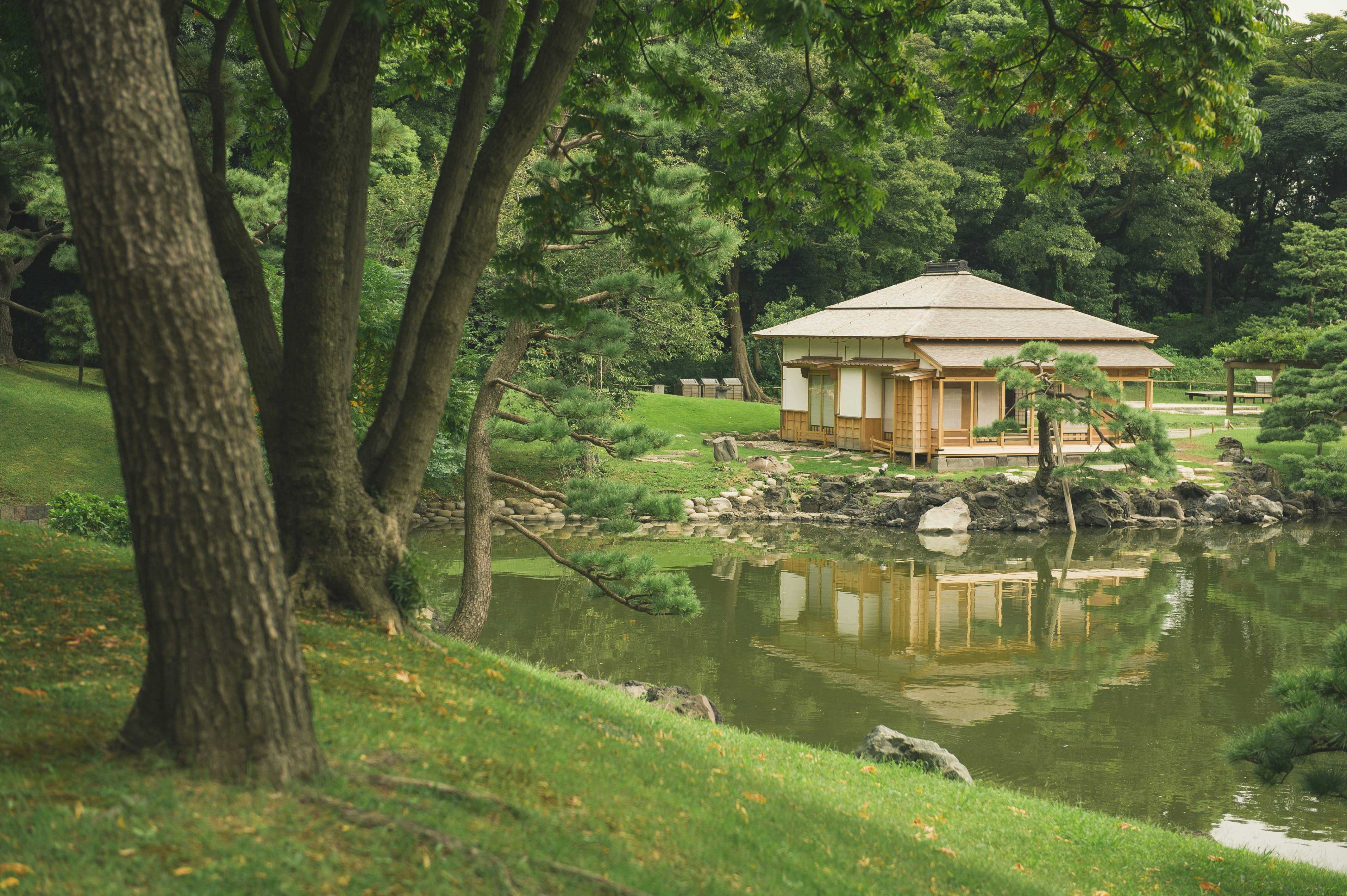
Take a cruise to Hama-rikyū Gardens
The beautiful Hama-rikyū Gardens are all that remains of a shogunate summer villa next to Tokyo Bay. There's a large pond with an island, upon which sits a traditional teahouse where you can sip matcha. Don't miss the spectacularly manicured 300-year-old black pine tree near the Ote-mon entrance. A great way to access or depart from the garden is via Tokyo Cruise, which runs water buses from Asakusa to a pier on the garden's edge.

Stroll around Edo-era Koishikawa Kōrakuen
Koishikawa Kōrakuen is perhaps the most well-known of Tokyo’s Edo era (1603–1868) strolling gardens. It was established in the 17th century on property belonging to the Tokugawa clan – the family that ruled Japan at the time – right in the heart of the capital. Like other strolling gardens of the era, it incorporates elements of famous Chinese and Japanese landscapes. Don't miss the photogenic Engetsu-kyō (Full-Moon Bridge), and the beautiful vermilion-colored wooden bridge. The garden is particularly well known for its plum blossoms in February, irises in June, and fall leaves.

Inokashira Park is the best place to hire a boat
Inokashira Park is located in the western suburb of Kichijōji, a neighborhood popular with students, and considered to be one of the nicest places to live in Tokyo, mainly thanks to the wonderful park. It has a big pond in the middle flanked by woodsy strolling paths, and you can rent row boats and swan-shaped pedal boats to take out onto the water. A highlight is Inokashira Benzaiten, a shrine to one of Japan's eight lucky gods that is believed to have existed here for a millennia. On weekends look for musicians, puppeteers and other performance artists around the park, as well as lots of Tokyoites of all ages.

Shinjuku-gyoen National Garden is a favorite with Tokyo residents
Completed in 1906, Shinjuku-gyoen was designed as an imperial retreat. What was then the western fringe of the capital is now one of its most built-up, busy districts – Shinjuku. Since opening to the public in 1951, the garden has become a favorite destination for Tokyo residents seeking a quick escape from the hurly-burly of city life. The spacious manicured lawns – the best in the city – are perfect for a picnic. Other highlights include the greenhouse with tropical plants, the Taiwanese-style pavilion that overlooks the garden's central pond, and the cherry blossoms that sprout from the 1500 trees in spring.

Ueno Park is packed with culture
Sprawling Ueno Park is best known for its profusion of cherry trees that burst into blossom in spring, making this one of Tokyo's top spots for cherry blossom viewing. It is not a park in the grassy sense; it’s more like an open-air cultural complex, with grand museums (including Tokyo National Museum) and centuries-old temples and shrines connected by wooded walking paths. At the southern tip is a large scenic pond, which explodes with lotus flowers in summer. On weekends, look for buskers, acrobats and food vendors.

Something beautiful is usually in bloom at the elegant Rikugi-en
Considered by many to be Tokyo's most elegant garden, Rikugi-en was completed in 1702 at the behest of a feudal lord. It is definitely the most highbrow of Tokyo's gardens, designed to evoke scenes from classical literature and mythology. But no context is necessary to appreciate the wooded walkways, stone bridges, central pond, trickling streams, and wooden teahouses of this beautifully preserved garden. At one teahouse, you can drink matcha al fresco while overlooking the water. There is almost always something in bloom at Rikugi-en, though the garden is most famous for its maple leaves in late autumn. Usually during late November and early December, the park stays open until 9pm and the trees are illuminated after sunset. In spring, the highlight is the large weeping cherry tree near the entrance.
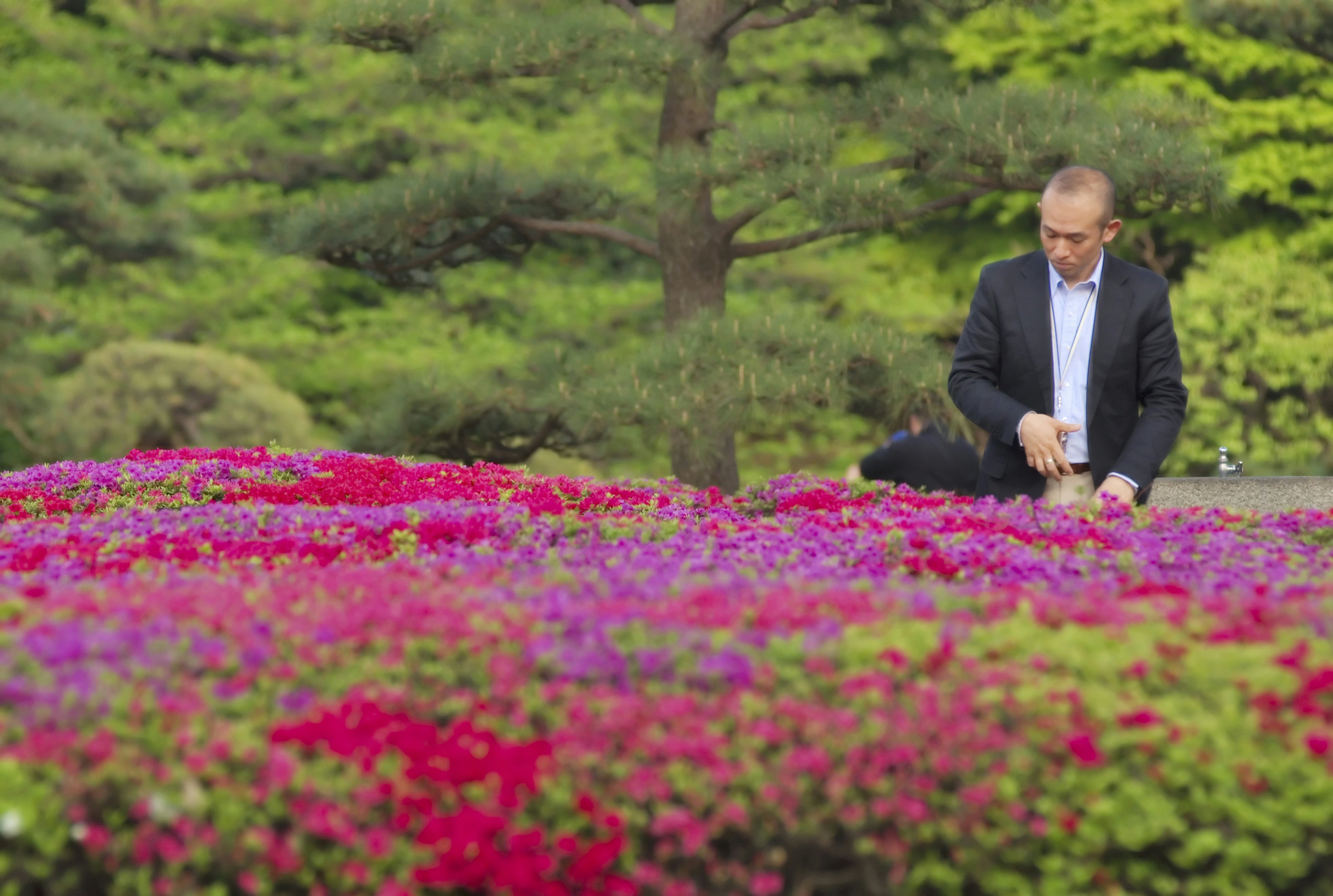
See the original Edo Castle at Imperial Palace East Garden
The Imperial Palace East Garden was crafted from part of the original Edo Castle compound where the Imperial Palace sits today. Visitors can get close-up views of the massive stones used to build the castle walls, and even climb the ruins of one of the donjons (main keeps), off the upper lawn. The number of visitors at any one time is limited, so it never feels crowded. Don't miss Ninomaru Grove, a woodland area that is one of the prettiest parts of the garden, with a pond and an elegant teahouse. Just inside the gate you may want to drop by the Museum of Imperial Collections, which has small exhibits of the 9500-plus artworks owned by the imperial family.
Tokyo's flora has gone wild at the Institute for Nature Study
What would Tokyo look like were it left to its own natural devices? Since 1949, the Institute for Nature Study has let the local flora go wild and today this research park is home to nearly 1500 species of plants. There are wonderful walks through its groves, around ponds and on boardwalks over marshes. It's also very popular with bird-watchers, who come to spot resident Mandarin ducks and kingfishers, and migratory flycatchers. No more than 300 people are allowed in at a time, which makes for an even more peaceful setting.

Kiyosumi Garden is the best picturesque retreat
One of Tokyo's most picturesque retreats, Kiyosumi Garden started out in 1721 as the villa of a regional lord under the shoguns. After the villa was destroyed in the 1923 earthquake, Iwasaki Yatarō, founder of the Mitsubishi Corporation, purchased the property. Prized stones from all over Japan were transported here and set around a pond ringed with Japanese black pine, hydrangeas, and Taiwanese cherry trees. It's common to see turtles sunning themselves on the stones. Located east of the Sumida River, and off the beaten track, Kiyosumi Garden is usually less crowded than Tokyo's more central green spaces.
You might also like:
21 of the best free things to do in Tokyo: from shrines to sumo
The best times to visit Tokyo: from spring cherry blossoms to winter lights
Anime, arcades and pop-culture artifacts: a geek’s guide to Tokyo







